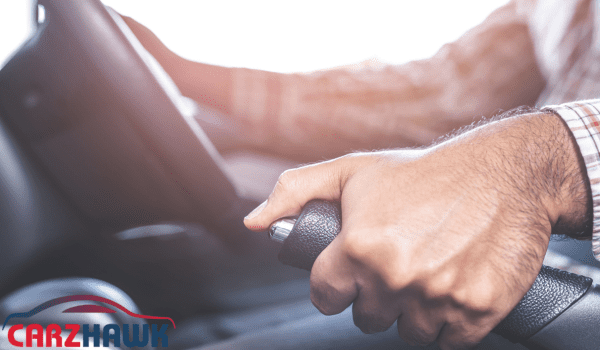On off-road vehicles, especially Polaris vehicles, the idea of engine stopping is very important for how well they handle and perform. But a lot of riders might not pay attention to how complicated this system is, especially when engine stopping isn’t present or isn’t very strong. To make rides safer and more efficient, you need to know how to use no engine brakes. What we’re talking about is the Polaris clutch system, a complex device that is meant to improve power delivery and response.
The function of the clutch has a big impact on how a vehicle acts in different situations, changing everything from speeding up to slowing down. When riders press down on the gas pedal, the clutch engages and disengages, which changes how quickly the car can slow down without using the engine’s brakes.
This piece goes into detail about how the Polaris clutch works, including how it works with the engine, what happens when the engine doesn’t brake as well, and how this affects the rider experience as a whole. By looking at all of these factors in depth, we hope to give Polaris fans the information they need to make the most of their vehicles’ abilities, resulting in a better and more enjoyable off-road experience.
Importance Of Clutch Performance In Vehicles.
Performance of the clutch is a key part of making sure the car runs smoothly and providing a good driving experience generally. A clutch that works properly lets power flow smoothly from the engine to the gearbox, which lets drivers speed up quickly and stay in control in a variety of driving situations.
It is very important for the engagement and release processes, which are needed to change gears without damaging the gearbox or stopping the engine. Having the right clutch performance not only makes a car more responsive, but it also saves gas and makes the drivetrain parts last longer.
When you drive a Polaris model that has an advanced clutch system, the efficiency of the Polaris clutch is even more important. These systems are made to work with a variety of surfaces and driving styles, transferring power as needed while preventing slippage as much as possible.
This flexibility makes sure that the vehicle works well in a range of situations, such as when going up steep hills, over rough ground, or making quick turns. Maintaining and keeping an eye on the performance of the clutch is important for getting the most out of the car, staying safe, and enjoying driving more overall.
How engine braking affects clutch operation.
When the engine stops, it can have a big effect on how the clutch works, especially in cars with more complex clutch systems like Polaris models. The engine’s RPM goes up when the driver downshifts, which can make the clutch contact more quickly because the engine is going faster. If this isn’t handled properly, it can cause the clutch parts to wear out faster.
When the engine is slowed down, the clutch needs to be able to handle the rapid changes in torque so that the vehicle can slow down smoothly without affecting its performance.
In addition, the function of the Polaris clutch becomes very important for keeping these dynamics under control. When the engine is slowed down, a properly calibrated clutch system can help with smoother changes, making sure that power is moved efficiently without too much heat buildup or premature wear.
Polaris clutches help keep the car stable and the driver in control by improving the engagement and disengagement processes during engine braking. This makes driving more enjoyable overall.
Benefits Of Optimizing Polaris Clutch Systems.
By making the power delivery and responsiveness better in a variety of driving situations, optimising Polaris clutch systems improves the overall performance of the vehicle. A well-tuned clutch system lets you enter and disengage it more quickly, which helps you keep the RPM at the right level and manages torque well.
This makes riding more enjoyable because drivers can expect smoother acceleration and deceleration, especially on rough ground or when making sharp turns. A well-designed clutch also makes it less likely that parts will wear out too quickly, which extends the system’s life and lowers the cost of upkeep.
Polaris clutch performance also plays a part in getting better gas mileage and lowering emissions. When the clutch enters and disengages smoothly, the engine works better and less energy is lost than necessary. This efficiency not only makes rides go faster, but it also helps make the process better for the environment.
When competing, making the clutch system work better can give riders a big advantage by letting them use all of their vehicle’s power while also having a smoother, more controlled ride.
Common Issues With Engine Braking Functions.
Problems can arise with the engine braking functions that make them less effective, especially in cars with Polaris clutch systems. A common problem is that the clutch isn’t tuned right or is worn out, which can make the engine brake less effective.
If the clutch doesn’t engage or disengage at the right RPM, the engine may not be able to stop properly, forcing the car to rely more on its regular brakes. This dependence not only makes it harder to control when going downhill, but it can also make the brakes wear out faster and cause the car to overheat.
Another usual worry is about how the engine’s RPM range and throttle response are set up. If the settings for the engine don’t match up with how the clutch works, the engine braking may feel uneven, making the driving experience less reliable.
When drivers try to slow down with engine braking, they might not feel like it works as well as it should, especially when they need to stop quickly. Taking care of these problems with regular maintenance and setting the Polaris clutch correctly can improve how well the engine stops, making the ride safer and easier to control.
Tips For Maintaining Clutch Performance Efficiency.
The clutch system needs to be serviced regularly to make sure it works at its best. One of the best things you can do is check and fix the clutch parts on a regular basis for wear and tear. This means looking for any signs of damage or wear on the clutch weights, springs, and belts.
Aligning and calibrating these parts correctly can make the car much more responsive, allowing for smoother engagement and disengagement, which has a direct effect on how well the Polaris clutch works. Keeping the clutch free of dirt and other impurities is also very important for keeping it working well, since any blockage can cause it to wear out faster and stop working as well.
Also, keeping an eye on the fluid levels and making sure the clutch works within the suggested temperature range can help keep it from getting too hot, which can hurt its performance. Using good oils and following the manufacturer’s instructions for changing the fluid can make the clutch system last even longer.
Lastly, being aware of your driving habits, like not using the throttle too much or shifting gears quickly, can greatly lessen the stress on the clutch, making it work better overall. By doing these things, Polaris drivers can keep their clutch system working well, which leads to better control and dependability, especially in tough situations.
Conclusion
To sum up, it’s important to understand what “no engine braking” means in terms of Polaris clutch performance if you want to ride off-road safely and efficiently. A lot of what controls and transfers power depends on how complicated the clutch system is. This is especially true on rough ground.
Riders can make smart choices about maintenance and riding style if they know how engaging and disengaging the clutch affects the performance of the vehicle. As technology keeps getting better, knowing about these things will not only make riding more fun, but it will also help Polaris cars handle better and last longer. When riders know these things, they can go on adventures with trust and skill.
FAQ
What Is Engine Braking, And How Does It Typically Function In Vehicles With Traditional Automatic Or Manual Transmissions Compared To Those Using A Polaris Clutch System?
When the driver cuts back on the throttle, the vacuum pressure in the engine slows the car down. This is called “engine braking.” Downshifting, which raises engine RPM and uses engine resistance to slow down, is how this is done in standard automatic or manual transmissions. The belt-driven clutch disengages at lower speeds, which improves engine braking in Polaris-equipped cars.
This lets the engine slow down the vehicle more effectively without stalling. This method makes slowing down smoother and gives you more control, especially when you’re off-roading or going fast.
How Does The Design And Performance Of Polaris Clutches Contribute To The Phenomenon Of No Engine Braking In Snowmobiles And Atvs?
Polaris clutches have a changeable ratio design that makes it easy for power to flow from the engine to the drive system. The gears stop working when the throttle is let go, which stops the engine from stopping. Because they depend on rotational force, the driven clutch stays open at lower speeds, making resistance lower.
So, the car just coasts along without slowing down like engine stopping would normally do. People who ride snowmobiles and ATVs often say that they feel like they have “no engine braking” because this design makes them faster and easier to turn, but it also makes it hard for them to slow down when they let go of the throttle.
What Are The Potential Advantages And Disadvantages Of Having No Engine Braking In Polaris Vehicles, Particularly In Off-Road Or Snowy Conditions?
Polaris vehicles that don’t have engine brakes have smoother deceleration and less stress on the drivetrain, which can improve performance in some off-road situations. On the other hand, drivers may lose control on descents or when the road is wet because they can only use the brakes, which could cause the car to overheat or lose its grip. In the snow, cars that don’t have engine brakes can slide, which makes it harder to keep control.
As a whole, it can make acceleration and handling better, but it could also be dangerous in rough territory.
How Can Riders Or Operators Of Polaris Vehicles Adapt Their Driving Techniques To Compensate For The Lack Of Engine Braking During Descents Or Sudden Stops?
Polaris riders and operators can change the way they drive by doing things like moving down to lower gears for better control and using the brakes in a smart way. Instead of stopping all of a sudden, slowing down gradually can help keep things stable. Using the car’s traction control systems can help it grip better when going downhill.
Changing your body position, like moving your weight backwards on slopes, can also help you keep your balance. Predicting how the ground will change and staying away from obstacles will also help you move around more easily on descents. Using these methods will help you handle the car better and stay safe when the engine isn’t braking.
What maintenance practices can be implemented to ensure optimal Polaris clutch performance, and how might this affect engine braking capabilities?
To get the most out of your Polaris clutches, clean and check them often to get rid of rust and other debris. Check the weights and springs in the clutch for wear and repair them if they’re worn out. Make sure the drive belt tightness is right, and if it starts to show signs of wear, replace it. Keeping the cooling system clean can help keep it from getting too hot.
These habits make the clutch work better and be more sensitive, which speeds things up. Also, a well-functioning clutch can improve engine stopping by allowing smoother changes and faster deceleration when the throttle is removed. This can make rides more stable and easy to control.








